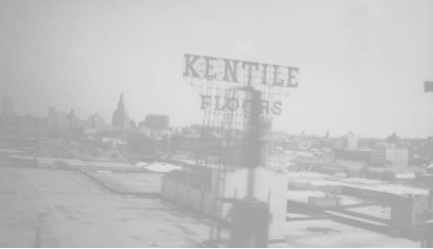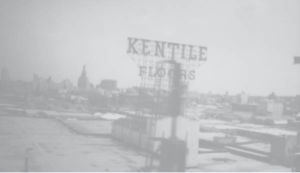Since the 70s and 80s, artists and other newcomers in search of cheap rent put sweat equity and creativity into restoring and transforming decaying factories and warehouses in Gowanus, the neighborhood surrounding the heavily polluted canal in South Brooklyn. And then many of these same newcomers organized in favor of preserving abandoned buildings, in the interest of protecting the “character” that the formerly bustling industrial hub had accrued by virtue of being largely deserted. This story of the efforts to preserve the appearance of industrial decay is the section I found most interesting about Gowanus, Joseph Alexiou’s history of the neighborhood and canal.
The book wends through the various stages of the neighborhood’s history, starting as a teeming estuary, burgeoning with molloscs, fish and birds, peopled by Lenape native americans; an agricultural hinterland for Colonial New York; the site of momentous revolutionary battles; the subject of decades of speculative endeavors to profit from urban infrastructure in the 1800s; an economically booming, polluted, class-divided industrial powerhouse with factories producing coal gas, chemicals, leather products; warehouses storing and transporting imports and exports, and dense, rundown housing for successive generations of immigrant wage workers through the 50s; a depopulating haven for organized crime families and people in poverty left behind by subsidized white flight to the suburbs; and then the subject of bohemian rebuilding, and competing pressures for redevelopment and preservation.
Across the stages of the area’s history, book tells the story of the fitful and never-successful efforts to build drainage infrastructure for the former estuary once it was paved over, through the latest attempts at drainage and cleanup. The combined stormwater and sewer system, a design that seemed thrifty and ingenious when it was invented, failed miserably, ensuring a future of sewage overflows.
In telling the stories of Gowanus across time to the present, there is a key element that Alexiou leaves out. Recounting the story of the contemporary settlers striving to preserve the area’s “industrial zoning”, he skips over the important story of when and how zoning was introduced to begin with. In the area’s industrial heyday, Gowanus included housing for factory and warehouse workers near the industrial sites where they worked. The workplace conditions and pervasive pollution were hazardous for the laborers health. Residents who restored warehouses as live-work lofts are eager to preserve the area’s distinctive appearance of post-industrial decay, but are not nostalgic for the good old days of coal gas manufacturing plants and tanneries. Industrial zoning was implemented to protect residents, but also contributes to sprawl, long commutes, and the de-industrialization of urban areas. There is a story to be told about what economic functions can be combined with modern standards for safe working and living conditions, but the book doesn’t tell it.
Also, the contemporary preservationists oppose newly proposed housing as “overdevelopment”, while showing a lack of nostalgia for earlier levels of population density in the area’s industrial heyday. Why should they get to turn the clock back to the depopulated state of the neighborhood when they moved in, rather than the density levels of the working class neighborhoods when the factories were churning out products? The reader can empathize with the neighborhood activists who lament the change change that is transforming their gritty, post-industrial paradise. But to cope with the end of an era, it is healthier to hold funerals than to seek to animate zombies.
Moving from substance to style, this book makes me appreciate the challenge of telling a compelling topical history. The genre turns a microscope on its singular subject to illustrate a set of changes across time. Works in this genre are not intended to be a definitive source on the sub-stories they tell along the way; this book isn’t intended to be a comprehensive source on Revolutionary battles, or 18th century industrial finance and financiers, or 19th century working conditions and labor conflicts. Success in the genre depends on readers being delighted by insights into the background and origin of familiar things; but depend on the writer’s judgement – how to tell just enough of each story to provide a dramatic arc, and to illustrate and move forward the themes of the book, and how much of one’s hard-earned research to leave out.
I found Gowanus to fall short in the art of pacing needed to excel in this genre; there were too many specifics about the troop movements of British and American armies, an excess of details regarding the architectural ornamentation and decor of the 19th century financier’s mansion, perhaps a few too many instances of gruesome industrial dismemberments than needed to get across the hazardous working conditions. Lingering on the evidence in each of the book’s episodes, it wasn’t clear which elements of the book’s themes the story was seeking to move forward. I’m glad that I read the book, but found myself occasionally skimming the details. The pacing challenges illustrate the difficulty of creating an work in the genre that is excellent, not just interesting.



